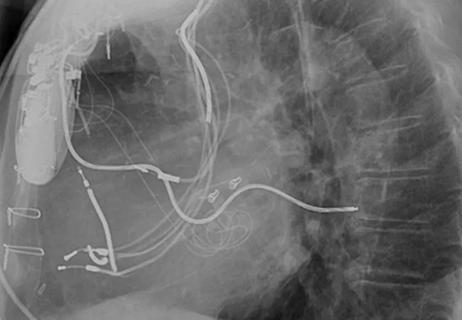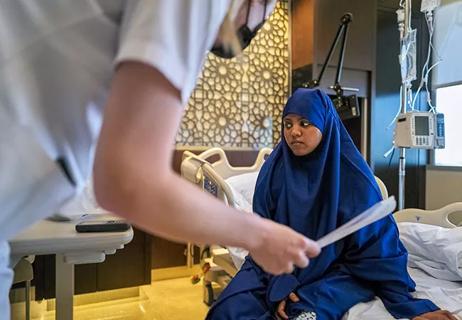Advertisement
Cleveland Clinic expert contributes systems know-how

Once considered a disease of affluence, coronary artery disease (CAD) today weighs heavier on developing countries than on Western nations, where public health efforts have begun to lighten the burden.
Advertisement
Cleveland Clinic is a non-profit academic medical center. Advertising on our site helps support our mission. We do not endorse non-Cleveland Clinic products or services. Policy
In India, for example, rates of CAD have exploded in the last 20 years. Indians are developing CAD at much younger ages than people in the U.S. — with a much higher incidence of ST-elevation myocardial infarction (STEMI). The death rate is many times higher. And survivors often are severely disabled due to delayed or insufficient treatment.
Those startling stats prompted a group of Indian cardiologists and other physicians to respond to the emerging health crisis. Called “STEMI India,” the group turned to U.S. cardiologist Umesh N. Khot, MD, Chief Quality Officer for Cleveland Clinic’s Miller Family Heart & Vascular Institute, for support in developing a system of STEMI care in India.
The request stemmed from Cleveland Clinic’s reputation for establishing protocols that reduce time to treatment for STEMI patients. For instance, the STEMI protocol implemented at Cleveland Clinic in 2014 has reduced median door-to-balloon times to 47 minutes — far shorter than the American College of Cardiology-recommended 90 minutes.
Dr. Khot emphasizes that his role with STEMI India is primarily advisory. “I’m not the lead, just a ‘best supporting actor,’” he says. “Indian cardiologists are the experts at how care is provided in their country and how patients present there. They are leading the effort.”
In 2015, STEMI India and other physicians, including Dr. Khot, published an article in Indian Heart Journal outlining a recommended framework for STEMI treatment in India. The article advocated:
Advertisement
The framework would be implemented at the level of India’s states and would require:
Tamil Nadu, a state in southern India, was first to test the framework. According to the state’s findings — recently published in JAMA Cardiology by STEMI India directors Thomas Alexander, MD, and Ajit Mullasari, MD — performance of PCI increased dramatically after the state instituted STEMI India’s hub-and-spoke model. More notably, one-year heart attack survival rates also increased.
“The Tamil Nadu pilot showed that the system of care was viable,” Dr. Khot says. “Five years ago, when we started talking about creating a framework, there was hesitancy. There were many challenges: the complexity, traffic, population…. Now, with evidence that the Indian cardiovascular community can organize itself, and with initial achievements earning international recognition, no one is saying it can’t be done anymore.”
Tamil Nadu’s success has inspired other low- to middle-income regions to replicate the model. A rollout is expected soon in the Indian states Telengana and Karnataka, and India’s central government has taken notice. Representatives of STEMI India recently presented to all state health secretaries at a Central Health Ministry conference. The hope is to incorporate STEMI India’s model in India’s National Health Mission.
Advertisement
Healthcare representatives from South Africa, Uganda and Kenya are considering the model as well.
“Designing STEMI systems of care is a maturing concept in the U.S., but not the rest of the world,” says Dr. Khot. “As more countries invest in healthcare, creating more cath labs, there needs to be organizational capability to coordinate STEMI care.”
And the learning is coming full circle. Dr. Khot notes that many care-process decisions being made in India — particularly those addressing geographic limitations — are applicable in the U.S. While primary PCI is standard here, STEMI India’s pharmacoinvasive option may actually make better sense in some rural or remote American communities.
“STEMI India’s framework shows that, in spite of a surge in disease and significant limitations in healthcare delivery, we can make tremendous progress in improving care,” Dr. Khot says.
Advertisement
Advertisement

Nursing leaders share knowledge, ideas and experience

Freely accessible LEADconnection.org is a one-stop shop for advice and more

Scoping review implicates temperature extremes, air pollutants, expanding infectious disease risk

Reforms aim to address escalating healthcare spending with new global care-delivery strategies

Program extends Cleveland Clinic’s commitment to global education and healthcare

How and why we are replicating our TAVR protocol across our U.S. and international sites

Cleveland Clinic reinforces operating model for international patient-centered growth

How an idea forged in war transformed healthcare around the world